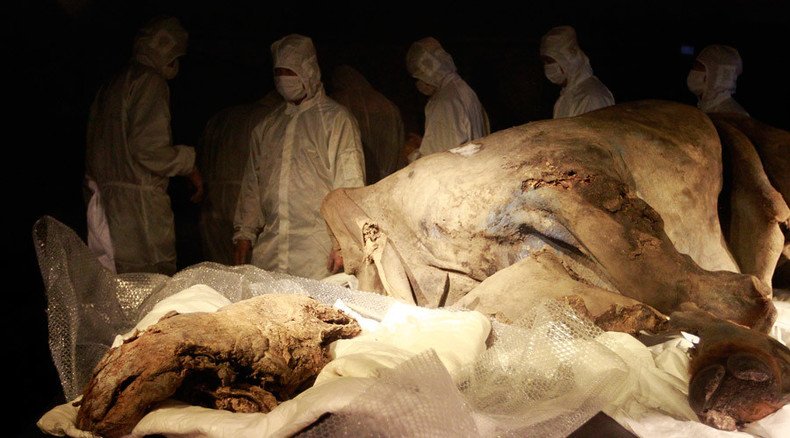Real-life ‘Jurassic Park’? Siberian lab set to clone extinct mammals

Russian scientists have begun their quest to clone prehistoric animals, including but not limited to a woolly mammoth, hoping that Siberian permafrost will give them a competitive advantage and a good possibility of finding undamaged DNA samples to resurrect the ancient species.
The new laboratory at the Mammoth Museum of the Institute of Applied Ecology at the North-Eastern Federal University in Yakutsk has begun searching through its vast library of samples that were found nearly perfectly preserved in the extreme cold conditions of the Arctic, according to Ogonek magazine.
Scientists hope to extract live DNA by carefully scanning through more than 2,000 rare exhibits contained in the lab, which is especially equipped to preserve tissue samples in freezers of -87 degrees Celsius. The new lab will also be used to swiftly analyze any newly found samples, without the risk of damaging them while transferring them to a distant laboratory.
The researchers’ overarching aim is to create a real-life “Jurassic Park” (or scientifically speaking a “Pleistocene Park”) full of extinct animals living in a specially designed nature reserve located on the Kolyma River in Yakutia. The project is currently aiming to recreate the pre-ice age environmental conditions, including the grasslands, by the time the extinct animals are resurrected.
Besides mammoths, scientists will focus their efforts in searching for the DNA of a woolly rhinoceros, early ancestors of bison and bulls, cave bears and cave lions.
After all, the lab’s collection includes a perfectly-preserved mummified puppy, found sealed in the Siberian permafrost after more than 12,400 years, a sample of a pre-historic 4,500 year-old horse, in addition to ancient bison species some 8,000-years-old. One of the world-s best-preserved woolly mammoths, 39,000-year-old Yuka, is also at scientists’ disposal.
Current efforts to clone ancient animals are being conducted by scientists worldwide, including at Harvard and the University of Chicago. So far they have been held back by the quality of their mammoth DNA.
Russian experts hope that they could find live DNA in its samples but anticipation remains bleak as the thawing process can destroy nuclear genetic information. On the other hand, the vast majority of all ancient animals’ soft tissues ever discovered had been found in Siberia.
Scientists hope that once extracted, the DNA would be crisscrossed with an Asian or Indian elephant to give birth to its historic predecessor. The Russian researchers are working with a Korean biotech firm Sooam and the Beijing Genomics Institute in China, utilizing their experience to ensure the success of the project.












